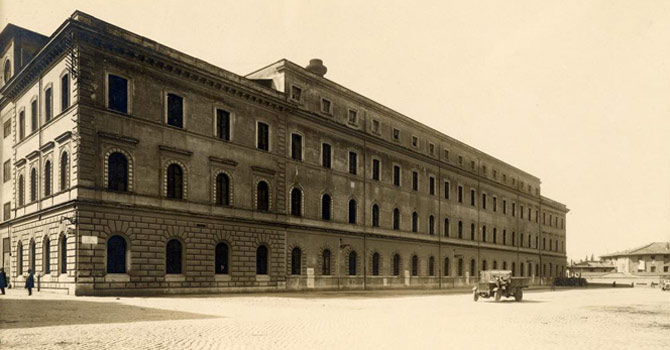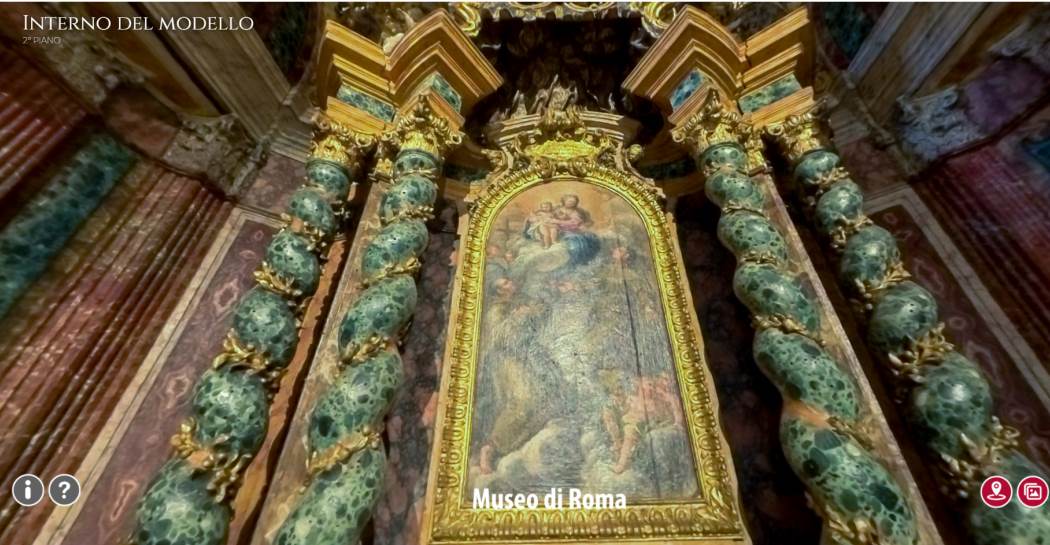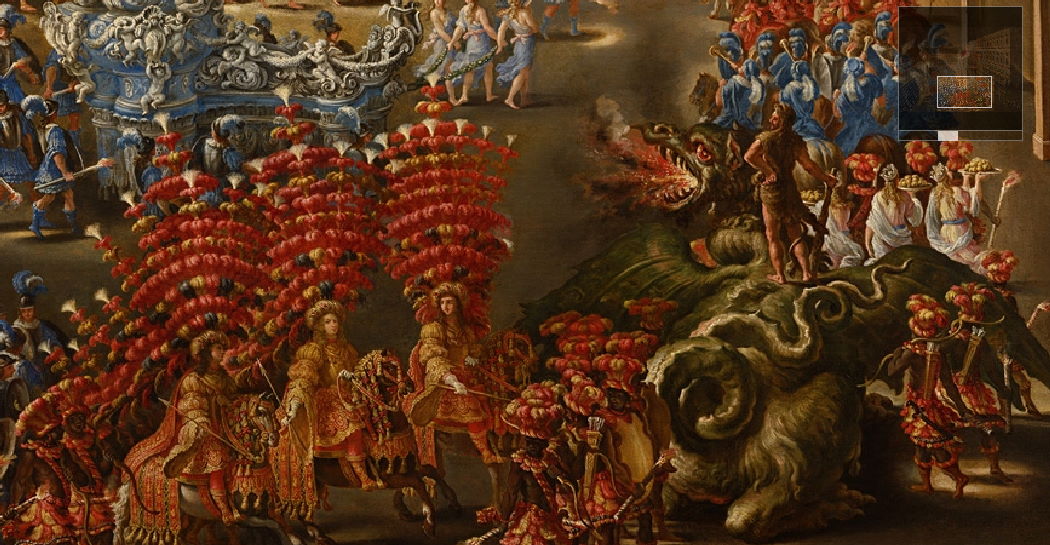The history of the museum
From the second half of the 19th century onward, many European capitals felt the need to set up important museums devoted to the art, history and culture of the cities: examples of these are the Musée Carnavalet, a museum of the history of Paris, founded in 1880, and the Town of London Museum.
The desire to create a museum conserving the memory and those parts of the city that were disappearing grew more pressing as a result of the demolitions that took place when the Urban Plan of Rome, as the Capital came into effect.


The need became even more pressing in view of the works in the 20's and 30's that led to the destruction of entire urban areas to give way to the utopia of modernisation of the Third Rome of Mussolini. The need to keep a record of the city's past becomes apparent in view of the fact that the City Administration commissioned a large number of photographs on many occasions of the areas most directly affected by the works, and promoted the purchase of collection of 120 pictures of The Rome of the Past taken by Ettore Roesler Franz between 1879 and 1896.
The Retrospective Exhibitions of the Arts in Rome from the 6th to the 19th Centuries, part of the Universal Exposition of 1911 to celebrate the 50th anniversary of the Unity of Italy, was a first step towards the creation of a documentary museum of history.
It displayed material illustrating places, professions and cultures that had disappeared, from the water-colours of Roesler Franz to the train of Pius IX, from the engravings of Renaissance Rome to popular customs. Some of these works came to the Museum of Rome, inaugurated on 21 April 1930, in the former Pantanella pasta factory in Piazza della Bocca della Verità, from the Director of Antiquities and Fine Arts of the Governship of Rome, Antonio Muñoz (1884-1960).
The Museum of the Empire, founded in 1926, occupied the same facilities. The Museum of Rome was, in fact, set up in the context of the many cultural propaganda initiatives of the Governorship. The Antiquarium and the Museum of the Empire celebrated the myth of the Roman spirit, which Fascism claimed as its legitimate ancestor.
The Museum of Rome was to restablish the tie with that far distant era of glory and recreate an epoch of the city's medieval and modern history.
This project, however, was reduced to exhibiting a few plaster models and reproductions, various illustrations of places that no longer existed, by contemporary artists. The most distinguished of these was the collection of water colours by Roesler Franz, as well as frescoes and stone fragments coming from demolitions, a group of ceramics, and a rich collection of maps and engravings involving the city, that documented the urbanistic transformations, historical events and costumes from the 16th to the 19th century.
The museum collection was to carry on with the aesthetic and evocative elements of the 1911 exhibition. It was to recreate theatrical scenes of popular life on the one hand, and, on the other, it revealed precise ideological aims with a heterogeneous selection of portraits of renown Romans from the 19th to the 20th century.
It recalled the acts of heroism of the First World War with a portrait of Enrico Toti, while a panel, painted by Edoardo del Neri, recalling Roman types and triumphs, celebrated the March on Rome, alluding to the black shirts, who rediscovered the destiny of Rome that reached back to ancient times.
In subsequent years, however, the Museum made numerous acquisitions of noteworthy quality, thanks to Muñoz himself. Examples are the paintings from the Rospigliosi collection and a series of 17th century busts, that set off a process of transcending the merely illustrative or documentary function of the works.
The War led to the closing of the Museum in 1939, though it had existed for less than a decade.
Pursuing new plans in the postwar period and moving to Palazzo Braschi in 1952, the Museum of Rome undertook a process of enhancing and valorising its collections, by creating a more unified and modern itinerary. It set up special exhibitions on topics of great scientific importance.
Such was the exhibition on the "18th century in Rome" in the Exposition Hall (Palazzo delle Esposizioni) organised by the Museum of Rome. The great exposition of photography in Rome between 1840 and 1915 was particularly important.
It brought together a hidden treasure of pictures from private collections and eventually opened the way to acquisitions of great value. The monograph on Bartolomeo Pinelli in 1956 offered the first exhaustive acknowledgement of the highly-varied work of the artist.
Up to then, it had been appreciated, but only in terms of its value as an illustration of the happy times of the past. Throughout the years, a series of bequests and gifts has further enriched the collections. This is due to the constant attention devoted to the Museum of Rome by the Association "Friends of the Museum of Rome".
The Museum of Rome collections benefited by the donations from Pollak Süssmann Nicod (from 1951 onward), Theodoli (1954), Lemmerman (1950 and 1964), Boncompagni Ludovisi (1954), etc. Other works came from those in storage at the Museum of Palazzo Venezia, the Museum of Industrial Arts, and the "Università dei Marmorari".
Among the acquisitions, the collection of 5000 engravings, drawings, old illustrated books belonging to Antonio Muñoz is worth mentioning, as well as the collection of water colours by Achille Pinelli, the set of views of Rome by Ippolito Caffi, the busts from the School of Bernini of the Barberini Cardinals, and the altarpiece of the "Compagnia delle Stimmate" attributed to Guido Reni.
Efforts to enhance the collections have gone on in more recent years. Carefully selected acquisitions have increased the historical and artistic wealth of the Museum giving it a new dimension above and beyond its original purpose of documentation.
The graphic arts and photograph collections grew to such an extent, that at the beginning of the 70s, the Museum of Rome was subdivided, with the creation of the Municipal Print Collection and the City Photograph Archives.
In 1987, the condition of the building was such that it had to be closed to the public. Reinforcement and conservation works, as well as technological updating of the Museum got underway in 1998, and the work is expected to be completed in 2002.
The Museum should reopen in 2000 with an exhibition devoted to Pius VI Braschi (elected Pope in 1775, and who died in 1799). The purpose of the exhibition is the bring out the historical, cultural and artistic significance of the 18th century building in which the Museum is located give more emphasis to that part of the collection that refers to the last quarter of the 18th century.
The image and development guidelines of the Museum had to be redefined in view of reopening, while that appearance it had been acquiring as of 1930 was to be conserved. The new structure will have to meet the needs of a modern museum facility from the point of view of scientific research, that of providing a Museum of the City, and that of services offered. For that purpose, the City of Rome set up a working group in 1993.
It consists of Museum officials and University teachers to set forth an overall plan for reorganisation of the collections. The result of their work was published in the "Bollettino dei Musei Comunali di Roma" (Nos. 8 and 9, 1994 and 1995).
An outline of the programme for the new museum was also presented at the International Convention Palazzo Braschi Rediscovers its Treasures which took place at the Capitoline Museum of Busts on 2 and 3 February (whose papers were published in 1995 by the Archivio Guido Izzi).
Part of the project for the New Museum of Rome is the Computer Documentation Centre which is cataloguing all the collections belonging to the Museum for the purpose of setting up a databank that can be used at various levels of access, for the museum staff, the student, the tourist or the scholar.
When the Museum reopens, the public will be able to consult the computerised catalogue of all the works kept in Palazzo Braschi and printed catalogues will be available for some areas of the collections.










































